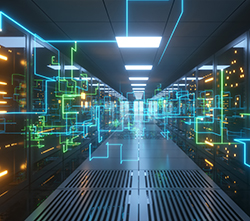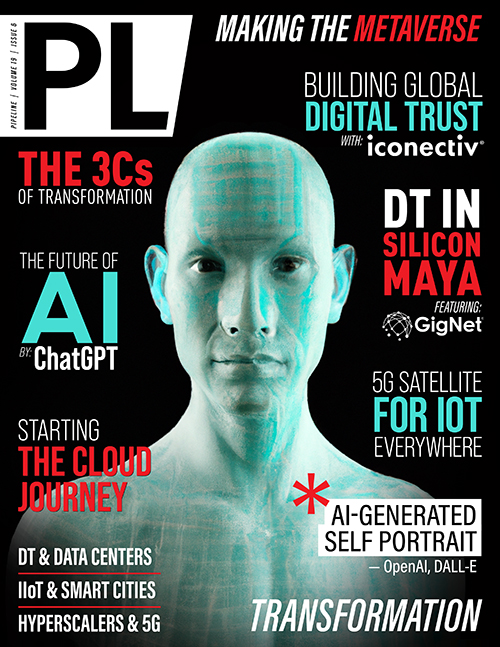How Regional Data Centers Are
Driving Digital Transformation
By: Michael C. Morey

Digital infrastructure will continue to be a key ingredient for today’s enterprises. As enterprises look at multi-cloud and hybrid cloud for their digital transformation solutions, they continue to seek out options that are more efficient and optimized. This brings regional data centers into the conversation. What were formerly considered Tier 2 locations (regional markets such as the Midwest) are now emerging as the new Tier 1. Increased demand for distributed hybrid networks with cloud and edge offerings and growing Tier 2 populations have positioned regional data centers in an important role as enablers in digital transformation.
Drivers of data center demand
Cloud services are the most significant driver for data center providers. To address this, enterprises need to manage their assets across colocation, infrastructure, on-premises data centers, and edge deployments. This cloud demand has increased data centers across the country for several reason explained below.
Growing need for hybrid cloud. Telcos and large organizations are seeking additional servers and low-latency connectivity options as people spend more time online. Data centers
are the answer to their growing need as services are distributed, deployed, and operated across numerous public and private networks and cloud services. The hybrid cloud plays a necessary role
for many enterprises because they can leverage the private cloud as it provides greater control and security, and public clouds for massive capacity.
Increased cloud migration. Cloud adoption is old news but in smaller communities, it is picking up. Why the delay? Lack of infrastructure. Regional data centers are providing the
necessary infrastructure to enterprises in smaller communities to get to the cloud and are removing this barrier for mid-sized organizations.
Edge computing. Bringing resources close to end users and markets of connectivity, edge computing enables (for example) IoT and 5G applications. Edge data centers are ideal for this as they can support high-bandwidth and low-latency applications such as content streaming, gaming, and navigation.
Other reasons why edge data centers are utilized and important include telecom infrastructure, peering, and colocation. Edge data centers support cell towers and fiber optic lines for last-mile access to end users. Towers with good access to bandwidth and electricity provide excellent locations for modular data centers. Data centers provide access to controllers, switching equipment, service gateways, and aggregation hubs. Additionally, cloud and enterprise data centers are prime locations for edge computing. As data centers are customized to fit clients’ needs and future demands, edge data centers are being deployed as a midstream point between data centers and end users.
Market constraints for the bigger markets are contributing to regional data center demand as well. Since the pandemic, data centers have been expanding quickly across the US and the globe. There are a few things enterprises need to consider, especially with larger data center companies: data center capacity is running low, they can be costly, Tier 1 markets are becoming saturated with land grabs (and thus getting more competitive), and supply chain constraints are slowing and increasing costs on new data center builds. As a result, Tier 2 markets are emerging as an important strategy for enterprises and are reshaping the commercial environment. These former secondary markets are leading the “edge” expansion as it becomes more imperative to move technology closer to consumers, providing available and affordable power, offering robust fiber, and a strong infrastructure with minimal disaster risks.
The popularity of Tier 2 markets
The saturation of Tier 1 cities over the last few years is driving operators into Tier 2 markets to meet current and future demand. What were once considered secondary markets have the power and fiber capacity with solid connectivity to Tier 1 markets—and are now on the table.
Additionally, residents have moved out of Tier 1 markets in favor of more suburban locations to improve their quality of life and cost of living. The impact of this migration to Tier 2 markets by businesses and individuals has increased cloud adoption, edge computing, and 5G wireless, driving more data center providers into Tier 2 markets to support the escalating need for data and low latency connectivity. Demand in Tier 2 cities is growing faster than in Tier 1. Markets like the Midwest that were once ignored are today considered key strategic locations. What started this was the COVID-19 shift in demand beyond the Tier 1 cities, especially as employees started working from home and companies relocated their operations to the suburbs. Data center network and infrastructure services have seen a remarkable surge in demand across a wide range of industries. Driving the need (especially for smaller-scale data centers) are 5G, IoT, and other emerging technologies like augmented and virtual reality (AR/VR).
5G: data centers bring in large amounts of data that 5G networks must process, store, and distribute. The increase in demand is for computing capacity and associated
infrastructures including storage, connectivity, and edge computing support.



















